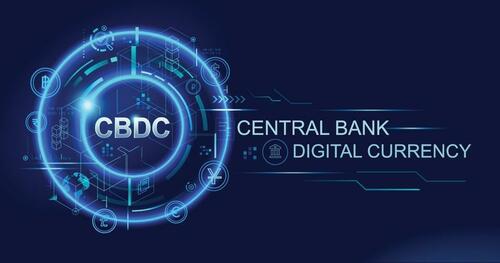Why Central Bank Digital Currencies Are Unnecessary And Dangerous; Central Bank Digital Currencies are Not a Great Idea; Trump Calls Central Bank Digital Currency ‘Very Dangerous’—After Vowing To Prohibit Fed’s ‘Digital Dollar’
Why Central Bank Digital Currencies Are Unnecessary And Dangerous:
The main central banks have been deliberating on the concept of introducing a digital currency. However, many citizens fail to grasp the rationale behind it when the majority of transactions in major global currencies are carried out electronically. Nevertheless, a central bank digital currency is much more than electronic money. I will explain why.
Central banks are raising interest rates and enacting restrictive monetary policies as quickly as governmental regulations allow because they are aware that monetary factors are the primary cause of inflation. Central banks have recently lost credibility by initially disregarding the inflation danger, then attributing it to transitory factors, and finally responding belatedly and gradually.
In a world where there is an excess in money supply growth, there are mechanisms in place to prevent a significant rise in consumer prices caused by the destruction of the purchasing power of the issued currency. Quantitative easing is subject to some constraints that partially prevent inflationary forces. As the banking channel serves as the transmission mechanism of monetary policy, credit demand acts as a constraint on inflationary pressures.
Now, consider if the transmission mechanism was direct and utilizing only one channel, the central bank. It is not the same to have a police officer walking down your street than to have a police officer in your kitchen watching your every move.
A central bank digital currency would be directly issued to your account held at the central bank. At best, it is surveillance masquerading as currency. The central bank would have precise information of your currency usage, savings, borrowing, spending, and transactions. It can enhance the fungibility of money to prevent the common but unfounded problem of “excess savings.” Moreover, as central banks become more politically involved, they might impose penalties on individuals who spend in a manner they consider unsuitable, while rewarding those who follow their recommendations. The entire privacy system and monetary limit mechanism would be removed. Moreover, if the central bank makes a mistake and creates an excess of money supply, as shown in 2020, it would immediately make consumer prices rocket. If the money supply increases dramatically in a year, we would experience massive inflation levels as the existing constraints of the transmission mechanism are eliminated.
Consider a scenario where you have a single account, a central bank, and the government. Guess what would happen? Full monetary financing of government spending leading to elevated inflation within a few years and the destruction of the private sector. Central bank digital currencies are likely to be a computerized rendition of the French Assignats. High inflation, complete government control, and financial repression. —>READ MORE HERE
Central Bank Digital Currencies are not a great idea
Let’s talk about money. Filthy lucre. Cash. Moolah. Legal tender. The big bucks. Central Bank Digital Currencies.
What, what was that last one? Central Bank Digital Currencies, or CBDCs for short, are the latest fad among academic economists inside the world’s national governments. They’re a great idea. As long as you hate financial privacy and economic freedom.
CBDCs are basically a type of digital dollar, an electronic form of Federal Reserve Notes (what we use as paper money). That in itself is nothing special. You use digital dollars whenever you use a credit card, a debit card, PayPal, Venmo, or any other digital payment service. We’ve had digital dollars for a decade or two now, and are better off for it.
Digital dollars on deposit are a liability of the private institution that holds them. Deposit a digital dollar in a bank, and the bank becomes responsible for returning to you when you ask for it. When you take out a digital loan, the dollars become a liability for you until you pay them all back.
But a CBDC is always a liability of the Federal Reserve, America’s central bank (that’s where the CB comes from). That means the Fed has the responsibility to do with it what ever is required. In other words, whenever you use a dollar of CBDC, there’s a direct connection between you and the Fed. Not a good idea.
Of course, paper dollars are a liability of the Federal Reserve, too; the Fed is standing behind their value. That’s what cash is.
So why are CBDCs different? There, my friends, lies the financial rub.
One reason people like cash is because it is anonymous. Cash is private and virtually impossible to trace. Yes, drug dealers like cash, but law-abiding citizens have plenty of legitimate reasons to value financial privacy. And some people just don’t trust banks. That’s their right. —>READ MORE HERE
Follow link below to a relevant story:








Comments are closed.